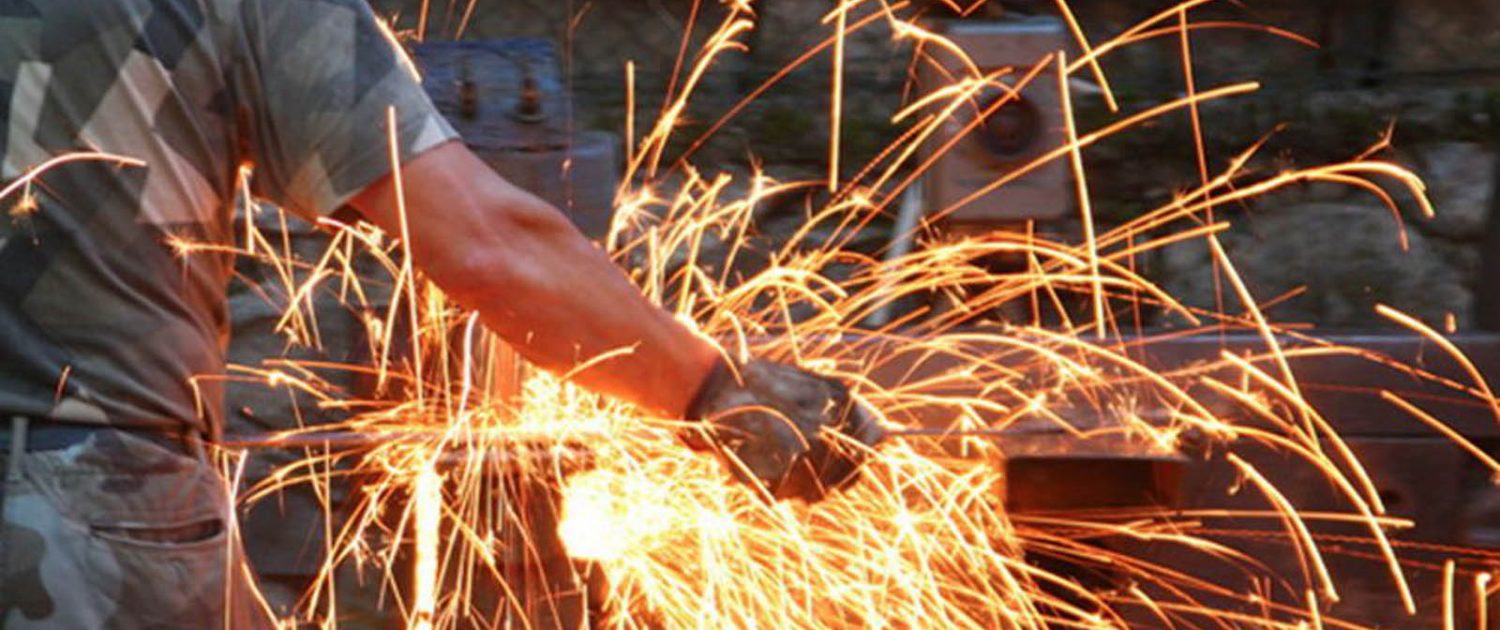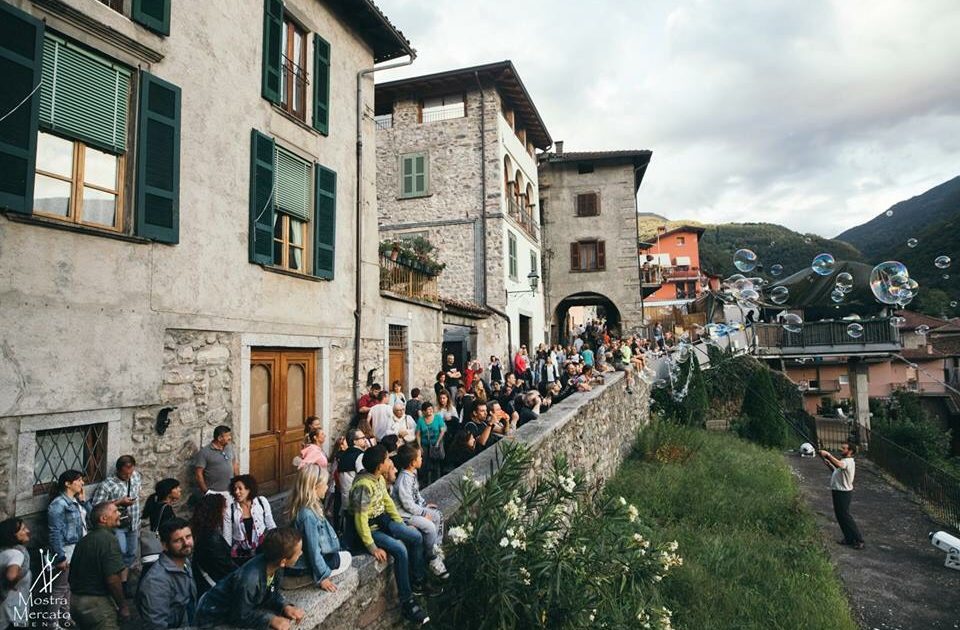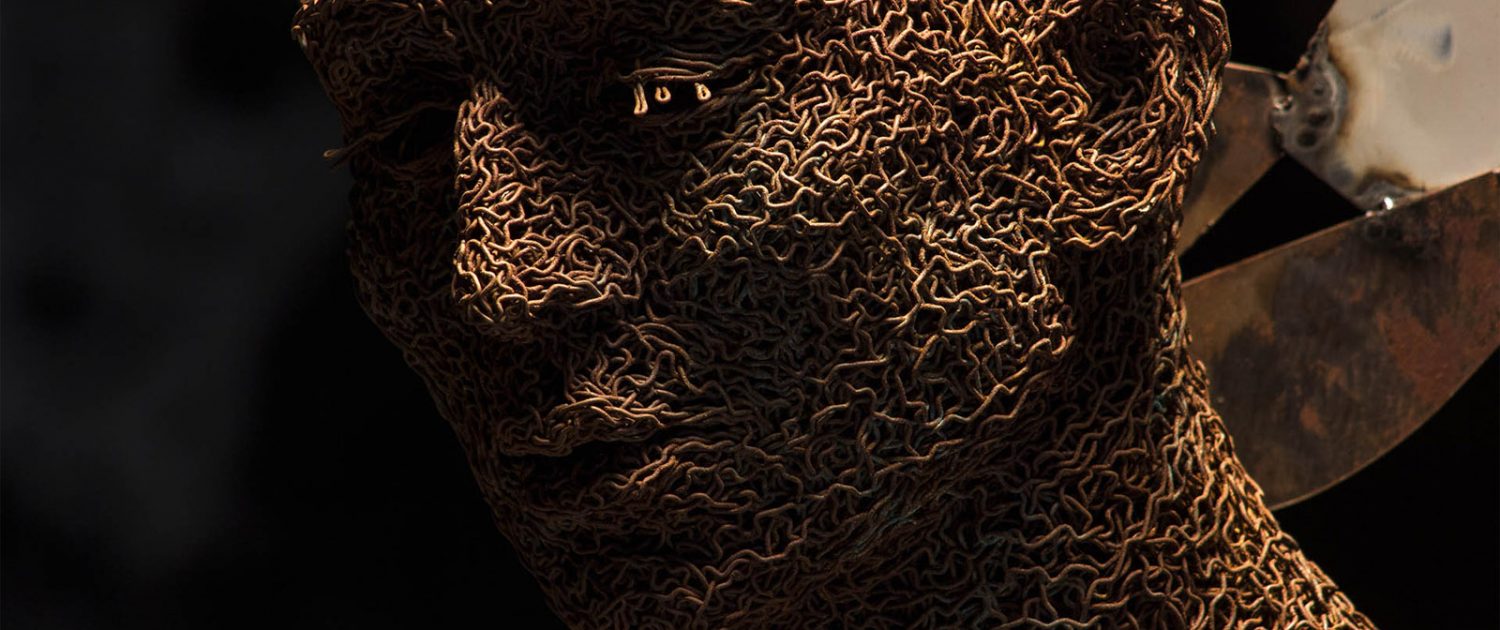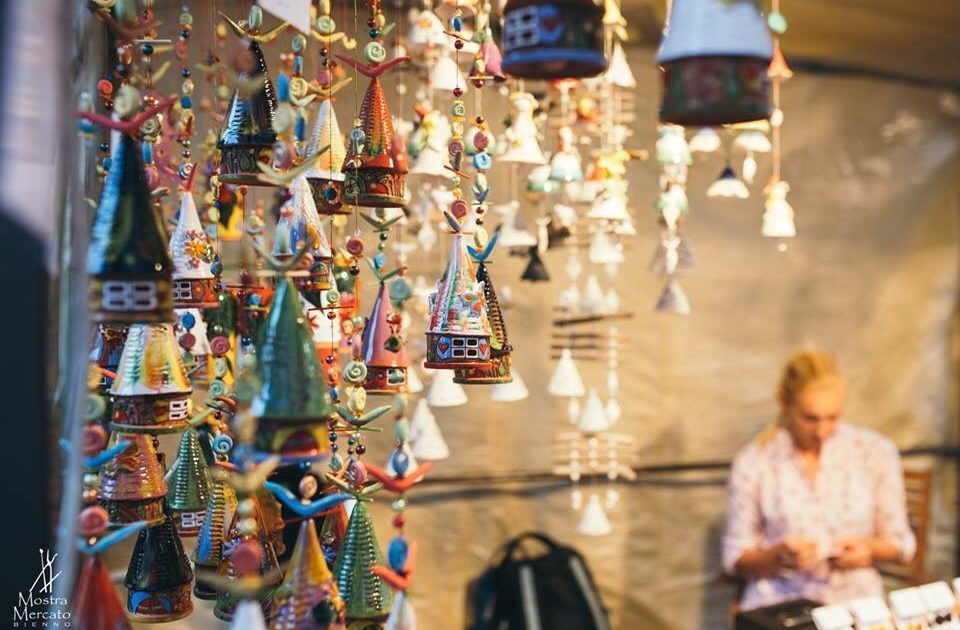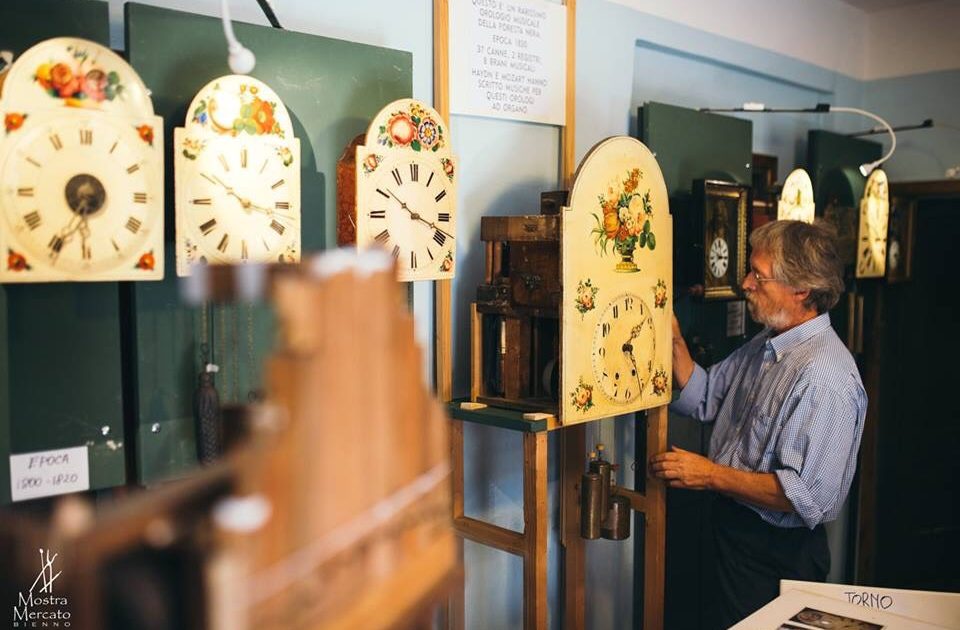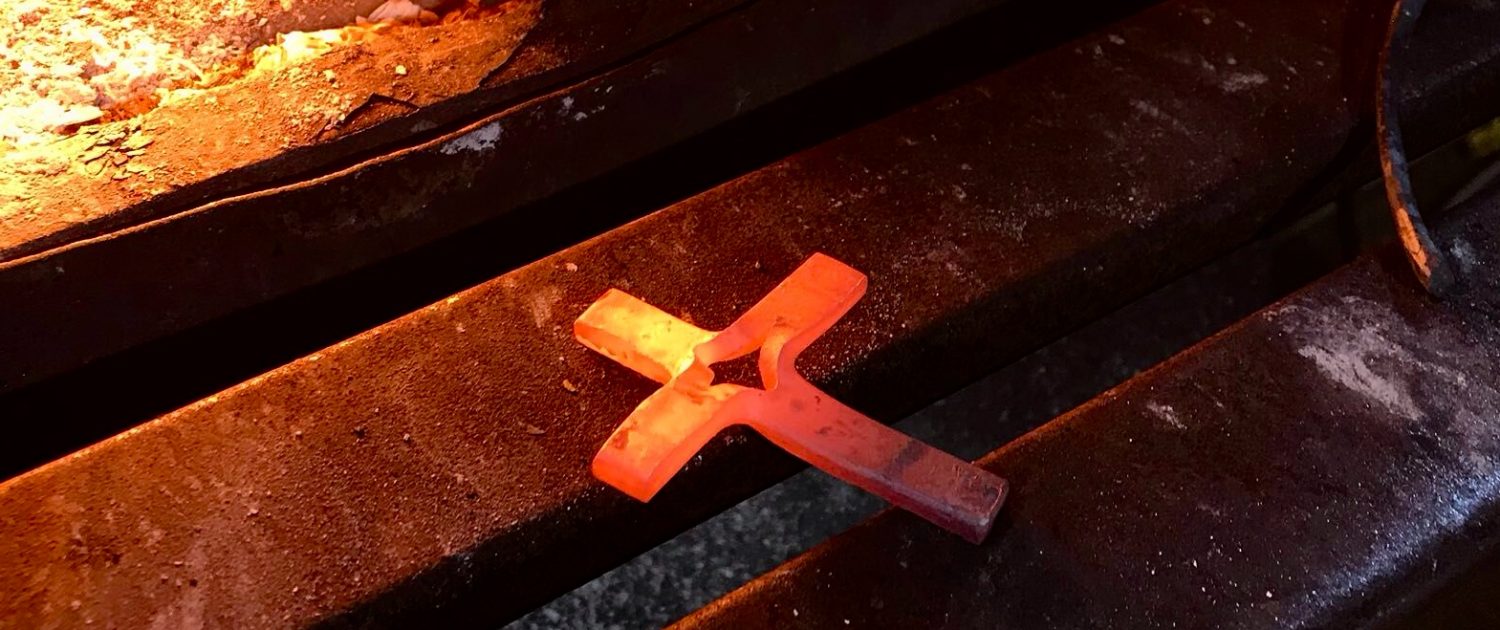Bienno (Italy)

Geographical position:
Camonica Valley, Valley of the Signs
Location:
Lombardy, Brescia
Size: 30,54 km²
Number of inhabitants: 3.893
Altitude: 445 m
Contact:
Associazione Bienno Turismo ( Tourism Office)
Piazzale Lorenzini 1
25040 Bienno
+39 3450484986
info.biennoturismo@gmail.com
www.comune.bienno.bs.it
www.bienno.info
www.scuolainfucina.it
www.mostramercatobienno.it
 Bienno is a small medieval village, which past and present are linked by an invisible wire that made it possible for our borough to become what it is today: the blacksmithing. Already inhabited by Camuni ( Camonica Valley residents) in the Prehistoric Era, Bienno became, in 16 BC, a Roman stronghold and acquired its typical perpendicular streets: it was later conquered by Barbarians, who were defeated by Longobardi.
Bienno is a small medieval village, which past and present are linked by an invisible wire that made it possible for our borough to become what it is today: the blacksmithing. Already inhabited by Camuni ( Camonica Valley residents) in the Prehistoric Era, Bienno became, in 16 BC, a Roman stronghold and acquired its typical perpendicular streets: it was later conquered by Barbarians, who were defeated by Longobardi.
Blacksmithing has been practiced since the very beginning by Camuni: the proof lies in the large number of mines that date back to the Prehistoric times located on the mountains surrounding the village. Around Year 1000 was built the Vaso Re, an overhead canal that brought water to the several mills, sawmills and forges and gave life to the hammers. The first written record from the 17th century talks about fifteen forges in the village: in the most productive times, life was lived by the hammer. The iron industry and its manufactures, which included agricultural tools and guns too, especially when Bienno was under the domain of Venice, granted a flourishing art, culture and economy , features noticeable in the rich churches, manors, remarkable frescoes and countless works of art.
Following the 60s economic crisis many forges have been shut down, but five of them have survived and are still as strong as ever; the most relevant ones are the “ Fucina Ludoteca“ ( rec center forge), where kids can learn more about iron working through games.
The Fucina Museo ( Museum-Forge) , belonging to past eras, guardian of the ancient and mighty hammers, has remained untouched and is still operational. Archimede’s Principle, put into practice by our smiths, who call this contraption „tina de l’ora“, breathes life into the hammers. Bienno’s skilled blacksmiths, our „Màihter“, with blackened but smiling faces, will welcome everyone into their fire kingdom and will happily unveil trade secrets to anyone who’s willing to listen.
Since 1988, this particular forge has been home to the „Ethnographic Iron Museum“. The last, but not in the slightest our least relevant forge is the ex Franzoni’s Forge; recently restored, public courses take place in it,alongside exhibitions such as the Iron Biennale, but most importantly, the Scuola-Bottega. This 4 year old project, which involves the collaboration of the CFP Zanardelli ( a Professional Formation School), teaches its students the basis of metal working, so that this ancient art won’t be forgotten. The pupils learn how a forge works in all its aspects, from which type of wood is to be used for different functions, to the smiths hierarchy: they read about the young Brahchì, the kid who had to light the fires in a smithy every morning, while they work with Fréar and Màihter, the chief smiths.
Welcome, dear reader, in one of the Most Beautiful Italian Boroughs!
 Bienno is a quiet little village in the north of Italy, located in the Camonica Valley. This is known as „Valley of the Signs“ thanks to the rock carvings made by Camuni, dating back to a period of time that goes from the 8th millennium BC to the medieval era: our Valley was the first italian site to be added to the Unesco World Heritage List.
Bienno is a quiet little village in the north of Italy, located in the Camonica Valley. This is known as „Valley of the Signs“ thanks to the rock carvings made by Camuni, dating back to a period of time that goes from the 8th millennium BC to the medieval era: our Valley was the first italian site to be added to the Unesco World Heritage List.
But let’s go back to Bienno now: there are a great deal of places to visit in this Borough, some of them are:
The Fucina Museo: Bienno is known as the “ Town of the Hammers“ for a reason: there are still five working forges in our village, but this one is the most important one. Our Màihter will welcome you into this ancient place, where they still forge buckets, shovels and other tools: they’ll show you how the hammers work and take you to the newest part of this smithy, the „Ethnographic Iron Museum“.
The House of Artists: not only this is the Town of the Hammers, Bienno has been for a few years home to artists from all over the world, who get to live here and produce their art; hence the title, „Artists Borough“.
Every village has its religious History, and so does Bienno; there are two particolar churches in this village that are worth a visit. The most ancient one is Saint Mary’s Church, built in the XVI century and completely frescoed by Giovanni Pietro da Cemmo, Fiamminghino and Romanino. The Parish Curch, devoted to Faustino and Giovita, overlooks the village: its bare outward appearance hides a richly frescoed interior, with 6 lateral altars enclosed in iron railings, surmounted by a huge organ and a wooden crucifix.
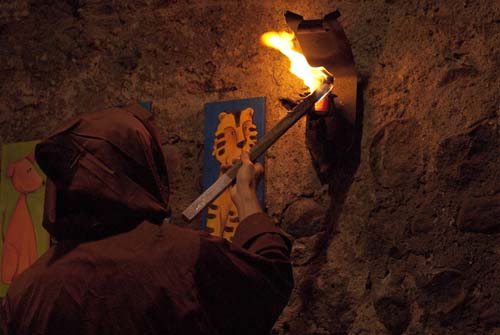 The 15th century Mill: This mill and its particular keeper attract lots of tourists every year, who never fail to go home with a bag of our flour.
The 15th century Mill: This mill and its particular keeper attract lots of tourists every year, who never fail to go home with a bag of our flour.
Maddalena’s Hill, that overlooks Bienno and its surroundings, is home to a particular monument: covered in gold, a 12 m high Christ statue watches over the Camonica Valley.
Naturally, there’s no shortage of bars and restaurants: our typical dishes, for example Casoncelli, Pane e strinù, Stracotto e Spongada, are hearty and filling. In our village there is a camping area and various events, such as motor racing meetings and horse fairs.
Bienno’s most known event is our Mostra Mercato, a fair which takes place every year in August: artists and merchants come from every part of Europe to sell their products, typical foods and wooden games, knives and fragrances, musical instruments and artworks, books and chocolates and much more. Daily shows entertain the crowd and more than 7 gastronomic booths serve typical foods and wines, while the skilled smiths forge for the tourists.
(status acquired in 2004)
Bienno has been a member of the Iron Ring since 2010 and has proudly hosted the annual Conference in 2013.

